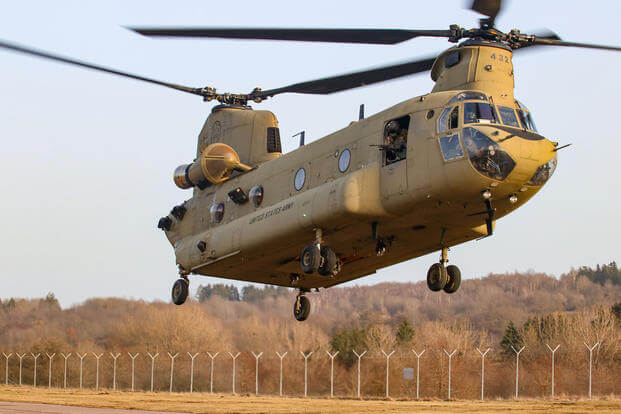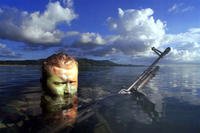Over the past decade, U.S. Army Special Operations Command aviation experts have recognized a need to separate the combat role of Army Special Operations Aviation from resourcing responsibilities. The Army and Special Operations Command thus received approval to create a one-star Army Special Operations Forces aviation force structure: Army Special Operations Aviation Command (Provisional), or ARSOAC. ARSOAC will be a subordinate command to the U.S. Army Special Operations Command.
Organization
The ARSOAC organizational structure is comprised of the headquarters and four subordinate units:
160th Special Operations Aviation Regiment (Airborne): Fort Campbell, Kentucky (four battalions stationed in three states)
U.S. Army Special Operations Command Flight Detachment: Fort Liberty, N.C.
Systems Integration Management Office: Fort Campbell
Special Operations Aviation Training Battalion: Fort Campbell
The new arrangement will enhance the 160th Special Operations Aviation Regiment war-fighting role of providing rotary-wing aircraft to support Special Operations Forces missions in all geographic combatant commands.
ARSOAC also will provide aviation oversight as well as service and component interface to ensure system integration, fleet modernization, material readiness, training and doctrine development.
Special Operations Aviation History
Special Operations Aviation traces its modern roots to the early 1960s and the formation of Special Warfare Aviation Detachments (SWAD), and finally a task-organized helicopter company as Army Special Forces prepared for Vietnam.
The 22nd SWAD activated in March 1962 at Fort Bragg. In June 1962, the unit was reorganized and redesignated as 22nd Aviation Detachment (Special Forces). The unit supported 5th Special Forces Group (Airborne), 7th SFG (Airborne), U.S. Army Special Warfare School, and the 1st and 13th Psychological Warfare Battalions. The detachment was inactivated in December 1963. The 23rd SWAD (Surveillance) organized in July 1962 and flew the OV-1 Mohawk. The unit deployed to the Nha Trang, Republic of Vietnam, in September 1962 to support I Corps and Special Forces with photographic intelligence.
On Oct. 7, 1965, the 281st Assault Helicopter Company, Airmobile Light (AML), was activated at Fort Moore, Georgia. By June 9, 1966, the newly formed company set up its headquarters inside the 5th SFG compound at Nha Trang Bay, Republic of Vietnam. The unit's mission was to provide air movement of troops, supplies and equipment under the direct supervision of the commanding officer, 5th SFG. After incorporating 145th Airlift Platoon, the 281st became the second organized special operations helicopter unit in the U.S. Army. Army historians consider the 281st to be the legacy unit for today's 160th SOAR. The unit earned decorations for Valor and Meritorious Service from the Army, Navy and Republic of Vietnam.
In the years that followed, the individual SFGs had their own organic aviation detachment. These detachments usually consisted of four UH-1D helicopters, associated crewmen and a limited maintenance capability. As a result of Desert One's failed Iranian hostage rescue in April 1980, the Holloway Commission -- chaired by former Chief of Naval Operations Adm. James L. Holloway -- mandated a reorganization of the nation's special operations capabilities, including a dedicated Special Operations Aviation force.
The Army looked to the 101st Aviation Group at Fort Campbell, the air arm of the 101st Airborne Division (Air Assault), which had the most diverse operating experience of the service's helicopter units. It selected Charlie and Delta companies (UH-60) of the 158th Aviation Battalion, individual members of the 229th Aviation Battalion (Little Birds) and Alpha company of the 159th Aviation Battalion (CH-47) to form the basis of the unit. The chosen pilots immediately entered intensive training in night flying. Dubbed Task Force 160, the new unit quickly was recognized as the Army's premier night fighting aviation force -- and its only Special Operations Aviation force. As pilots completed training in the fall of 1980, a second hostage rescue attempt, codenamed Operation Honey Badger, was planned for early 1981. It was called off when the hostages were released.
In October 1981, the unit was designated officially the 160th Aviation Battalion. The 160th first saw combat during 1983's Operation Urgent Fury, the U.S. invasion of Grenada. In 1986, the unit was redesignated as the 160th Aviation Group (Airborne). The modern-day 160th Special Operations Aviation Regiment (Airborne) was activated officially in June 1990. As demand for highly trained Special Operations Aviation assets grew, the regiment activated three battalions, a separate detachment and incorporated one Army National Guard Battalion. The three battalions replaced the separate aviation detachments at the Special Forces Groups.
In July 2007, the regiment activated a fourth battalion to meet growing special operations forces requirements. Eventually 2nd, 3rd and 4th Battalions will be organized identically with two Chinook companies, a Blackhawk company and a maintenance company.
In July 2010, a Gray Eagle Unmanned Aircraft System (UAS) element from Fort Huachuca, Arizona, was assigned to Special Operations. The element was rebranded with the USASOC patch and deployed to Afghanistan. Two Gray Eagle companies eventually will be stationed at Fort Campbell.
Some of the named operations the 160th has participated in include Urgent Fury, Prime Chance, Just Cause, Desert Storm, Gothic Serpent (led to the Battle of Mogadishu), Operation Enduring Freedom, Operation Iraqi Freedom and Operation New Dawn.
The 160th SOAR recently incorporated its first Gray Eagle company.
Ready to Join the Military?
We can put you in touch with recruiters from the different military branches. Learn about the benefits of serving your country, paying for school, military career paths, and more: sign up now and hear from a recruiter near you.







